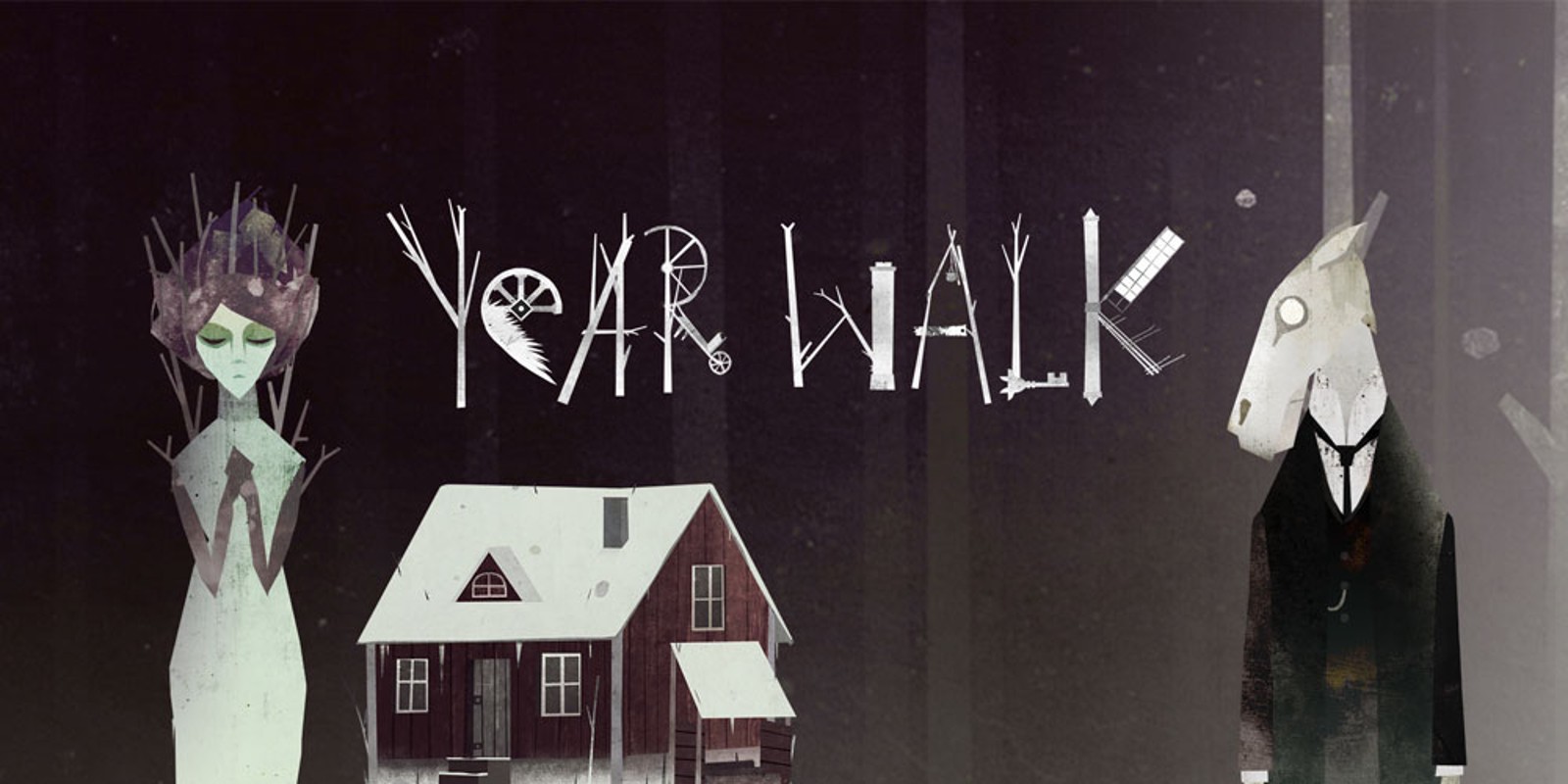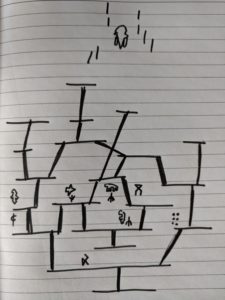
Developer: Simogo
Writer: Jonas Tarestad
Platforms: PC (me!), Mac, iOS, Wii U (lol)
Target Audience: Teens and adults interested in the puzzle, mystery, and horror genres and looking for more experiential storytelling games. Content involves some bloody and disturbing imagery, so it’s not intended for children.
Year Walk is a single-player (player-vs-game) puzzle game. Gameplay involves the player operating the character from a first-person perspective with the ability to move from side-to-side throughout the world and backwards and forwards through particular paths. Interaction through the world is generally point-and-click, and the player is trying to figure out puzzles to advance through the story.

My drawn map of the game and important landmarks
Through the use of puzzles embedded in the world, the games encourage players to explore connections between visually and thematically similar objects, which promotes the aesthetics of discovery and challenge. Many of these puzzles involve memory and navigation, and because the map doesn’t update with these markers and discoveries aren’t automatically logged, players must take their own notes about the world. By writing things down physically, players are engaged in the aesthetic of sensation through touch. Another sensation prevalent in this game is aural. The levels are filled with audio feedback, ranging from the crunching of footsteps through the snow to puzzles that test sense of pitch.
Year Walk primarily uses embedded narrative to tell the story of the protagonist on their vision quest. The inclusion of an encyclopedia of Swedish myths also creates the context through which the game environment becomes evocative through the inclusion of these settings and figures.
Despite the great use of audio feedback, the game is lacking in visual feedback and signaling for players. For elements that need to be moved, the movements sometimes don’t make sense, such as dragging a demonic horse upwards from the surface of the water. Moreover, one of my epic fails was when I had gone through the world freeing dead infant spirits but had no idea what to do with them. I discovered that I had to drag them inside of my encyclopedia and bring them to the demonic horse one-at-a-time. Not only was this unintuitive, but it also required a lot of backtracking, which was frustrating. Animated visual signals should be added to the interactable objects that telegraph how they should be moved. For example, if the horse was bobbing up and down, it would signal to the player that they would need to drag the horse out of the water.
Overall, Year Walk has mixed success in leveraging embedded narrative to tell the story of an ethereal vision quest. Though its world and sensory elements, such as sound design, are beautifully crafted, the visual feedback related to interactive elements makes the world feel clunky and frustrating.


